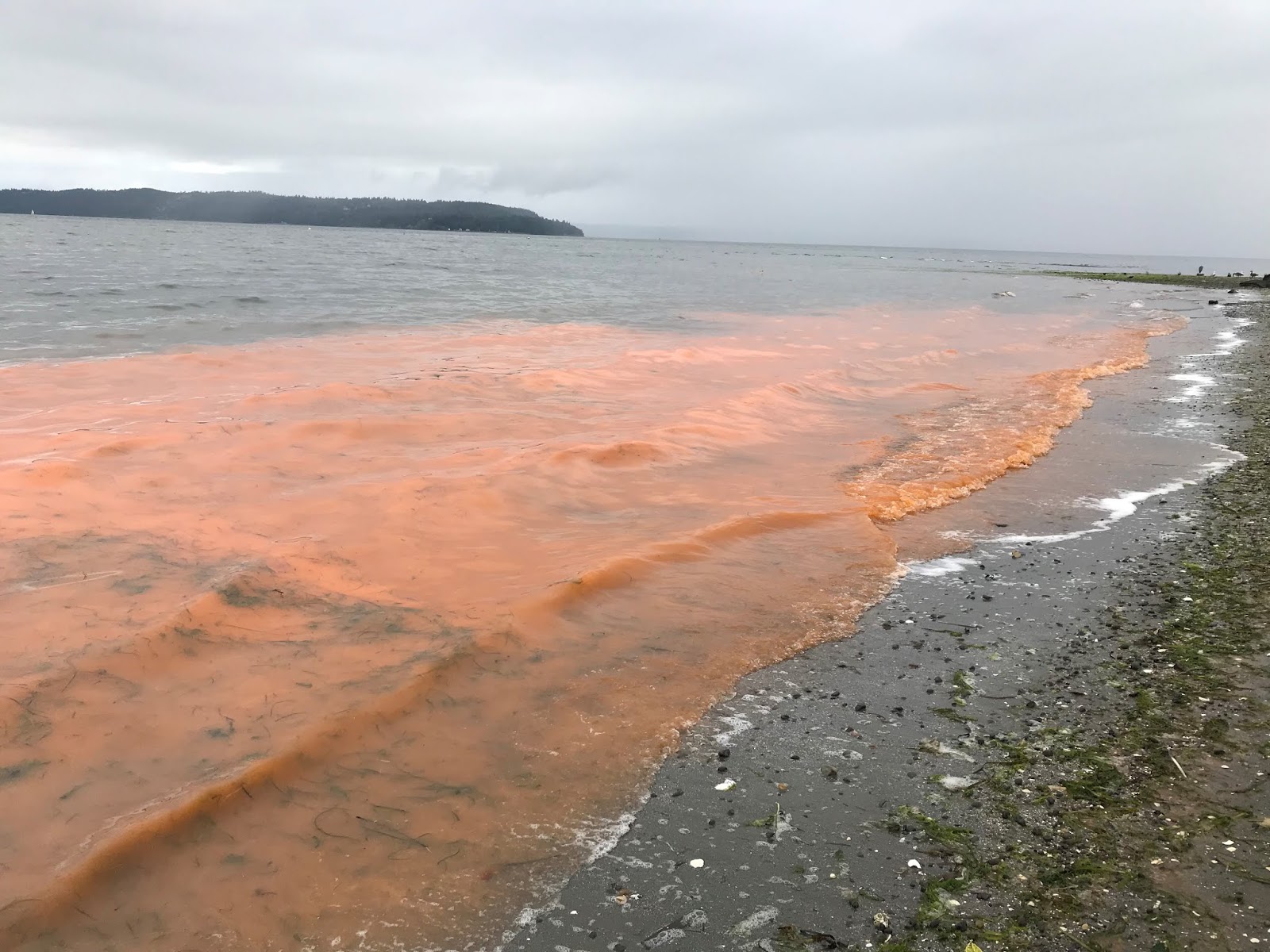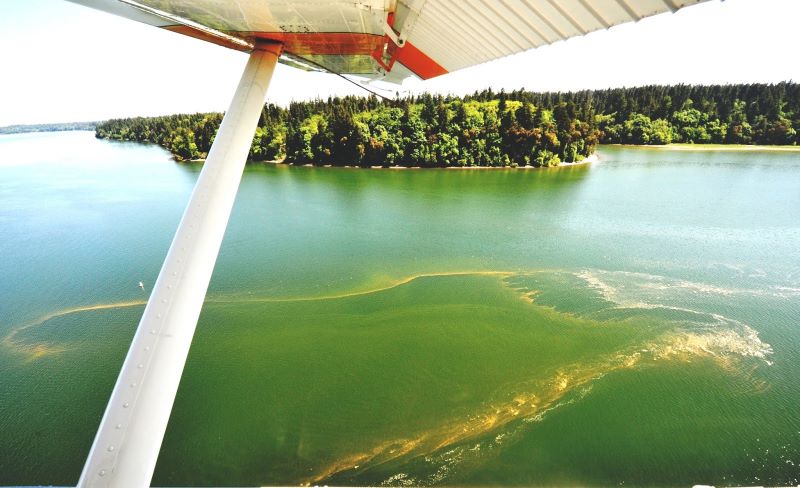
Welcome to our fourth installment of “Puget Sound Nutrient Watch,” an ongoing series of blogs that will focus on the problem of excess nutrients in Puget Sound.
During the first week of June, Laura Hermanson from the Department of Ecology BEACH Program noticed a red algae — Noctiluca — bloom during regular weekly bacteria monitoring at Saltwater State Park in Des Moines (pictured above).
Other blooms were also recently reported to Ecology. There was one reported to us at Seattle’s Alki Beach on June 2. And staff from our marine monitoring program, Eyes Over Puget Sound, also found presence of Noctiluca blooms present at Budd Inlet, Central Basin and Whidbey Basin during their regular fly overs of Puget Sound.
So what is this tomato soup looking stuff near our shorelines? What causes it? Is it harmful?
Is this part of a natural cycle or abnormal?
We learned in our third installment of “Puget Sound Nutrient Watch: What is the Problem with Nutrients?” that excess nutrients can cause an explosion of algae growth called algal blooms. This rapid growth of algae can starve the aquatic environment of light and dissolved oxygen, compromising its ability to support aquatic life.
What causes these spring and summer blooms?
Each spring, Puget Sound receives an influx of fresh water from melting snow fueling local rivers. This less dense fresh water flows into the Puget Sound mixes with saltwater to create a warm, nutrient-rich, surface layer that supports growing plankton populations. Spring and summer in the Pacific Northwest are marked by long days, warmer temperatures, and few storms. All of these factors contribute to slow circulation of water and an increase in layering within the water, called stratification.
Extra nitrogen and other nutrients that enters Puget Sound from human and natural sources, help feed these plankton populations until their populations grow to a bloom. Eventually the plankton bloom will use all the nutrients in the surface waters, their growth will slow until they die and sink deeper and some to the ocean floor to decay. Budd Inlet taken from an Eyes over Puget Sound flight June, 2018.
Is this harmful?
An increase in the abundance of Noctiluca is an indication of an unbalanced system, and while the plankton is not toxic itself, their presence creates a cascade of effects in the marine food web.
Please visit the National Oceanic and Atmospheric Administration website if you are interested or have concerns about Harmful Algal Blooms or other Marine Biotoxins.
What is it?
Noctiluca is a single-celled organism, in a group called dinoflagellates, that eats smaller phytoplankton and planktonic larvae that make up the base of a healthy marine food chain. Noctiluca contains high concentrations of ammonia which make them unappetizing prey in the food chain. Studies have shown this ammonia has a negative impact on juvenile fish within the population.
An Ecology study conducted from 2011-2015 explored the conditions in the Puget Sound that led to Noctiluca blooms by affixing sensors to ferry vessels to continuously measure plankton populations between Seattle and Victoria B.C.. When large blooms of Noctiluca exist in Puget Sound, their ravenous feeding patterns lead to a boom-and-bust of the plankton populations.
While Noctiluca are naturally occurring and blooms have been observed and recorded in Puget Sound since the 1940s, there is growing concern that human-caused nutrient over-enrichment is increasing the intensity, changing the timing, and increasing the spatial distribution of Noctiluca blooms.
What is being done?
Eyes over Puget Sound takes to the air once a month to obtain high-resolution aerial photographs, record observations, and gather water quality data at 37 remote marine monitoring stations to track and record how weather and climate are shaping Puget Sound water quality. Their June monitoring showed Noctiluca blooms present in Budd Inlet, Central Basin and Whidbey Basin. This recording and communication of large scale influence and impacts has helped inform Ecology’s nutrient reduction work.
The Puget Sound Nutrient Reduction Project aims to use science and collaboration to develop a plan to restore and protect Puget Sound water quality from local human sources of nutrient over-enrichment which feed algae growth. The Puget Sound Nutrient Forum is a collaborative stakeholder process that is actively seeking additional community involvement. To learn more and sign up for updates regarding the Puget Sound Nutrient Forum, visit our website.
To learn more about Noctiluca and eutrophication, read “Dead plankton leave clues to a food-web mystery” by Christopher Dunagan at the Encyclopedia of Puget Sound.


